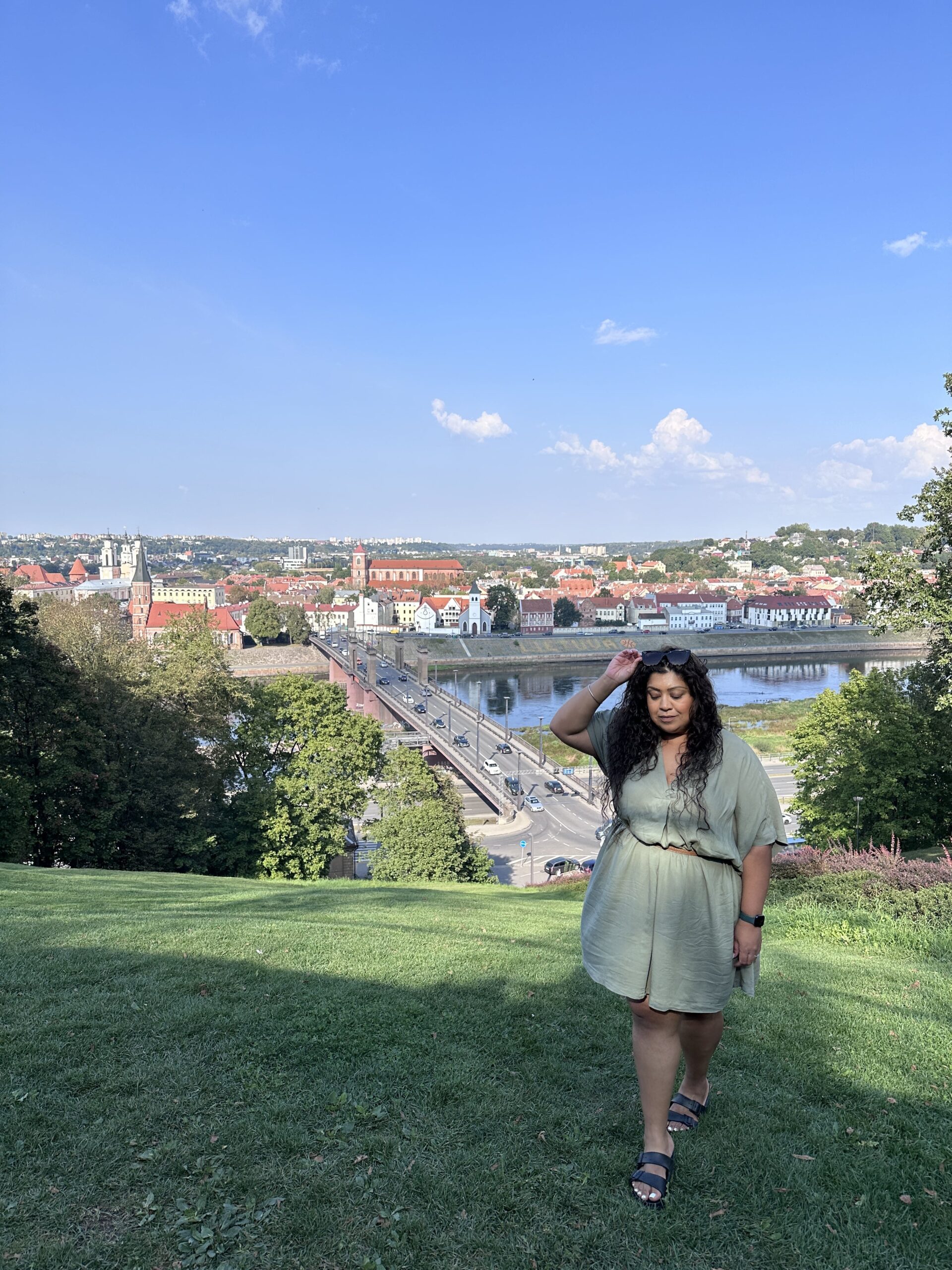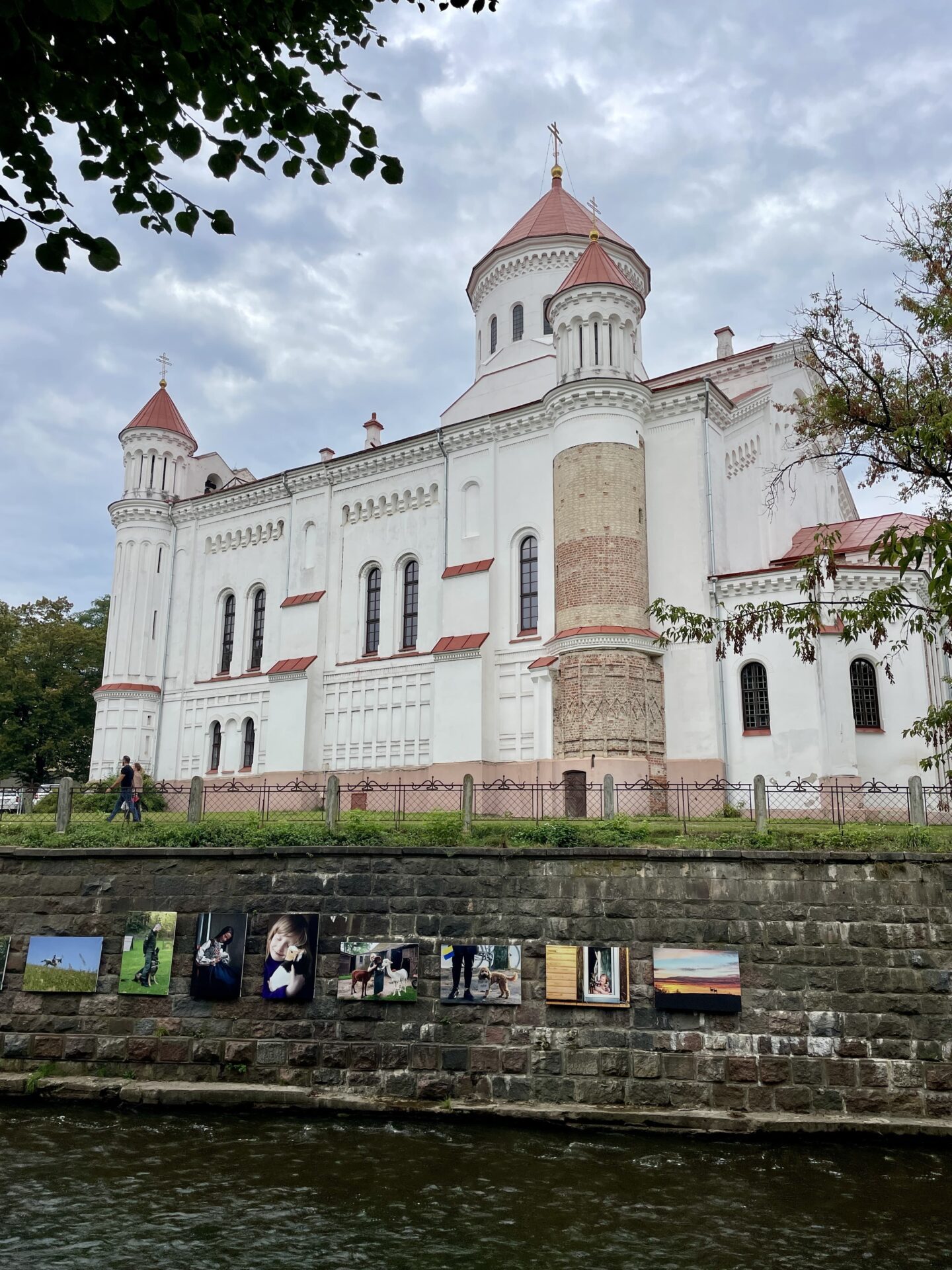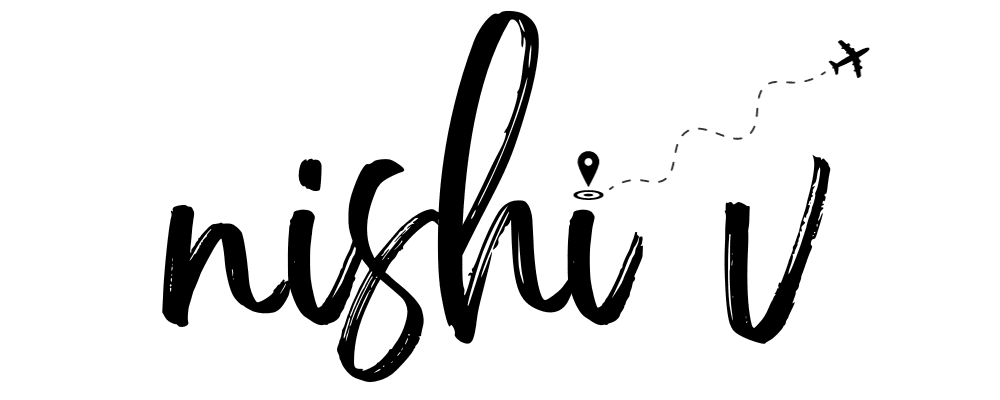30 Interesting Facts About Lithuania – Why You Need To Visit

Lithuania might just be one of Europe’s best-kept secrets. Tucked away in the Baltic region, it has everything; stunning landscapes, endless forests, and lakes that look like something out of a fairy tale.
Bordering Belarus, Latvia, and Poland, Lithuania has a fascinating history. Once part of the Russian Empire, they broke free after the Russian Revolution of 1917 and became an independent state.
There is so much more to love about this underrated gem than its past though. From its deep pagan roots to its ancient and ridiculously hard-to-learn language, Lithuania is packed with surprises.
Not many people I know have travelled here, which made me even more excited to visit. After spending time in Vilnius and Kaunas, I’ve gathered some seriously interesting facts about Lithuania to share with you, and I believe this is a this massively underrated country to visit.
Honestly, visit now before the crowds catch on! However, if you need a little more convincing, here are 30 fun facts about Lithuania that might just put it on your bucket list.
This post may contain affiliate links which means that I may earn a small commission, at no extra cost to you, for qualifying purchases. For more information, read our disclaimer.
No time to read these facts about Lithuania now? Save it for later!

Interesting facts about Lithuania

1. Lithuania was once the largest country in Europe
At the end of the 14th century, Lithuania was once the largest country in Europe. These days, it is around the same size as West Virginia in the USA, to give you an idea of scale.
2. Lithuania joining the United Nations in 1991
Iceland was the first country to recognise Lithuanian independence in 1991. This led to them joining the United Nations in 1991 too. Lithuania joined NATO and the European Union in 2004, so their history is very recent.
3. Kaunas is the second biggest city in Lithuania
Vilnius is the capital of Lithuania, but Kaunas is the second biggest city that was once their temporary capital city. Kaunas was the capital of independent Lithuania from 1920 – 1940.

4. People are friendlier in Kaunas
As is the case with many smaller cities in comparison to the capital, I found that people are much friendlier in Kaunas than they are in Vilnius. Taxi drivers and strangers in restaurants may strike up conversations with you out of nowhere or help translate things for you – and I love nothing more than engaging with locals.
5. Lithuania is the cheapest country in the Baltics
Lithuania is the cheapest country out of the three Baltic states. The Baltic states, which border the Baltic Sea in Northeastern Europe, consist of Lithuania, Latvia and Estonia.
6. Lithuania has one short coastline with three shores
The Baltic Sea coast has beautiful sandy beaches where you can find amber and the Curonian Spit has breathtaking views and dunes. Both of these are popular among locals and tourists in the summer months.




7. Vilnius is home to Europe’s largest baroque Old Town
Vilnius Old Town is a UNESO world heritage site. I found this fact about Lithuania fascinating; building regulations here require you to show what the original brick work looked like before modern facades were introduced. When walking around the Old Town, you will notice patches all over buildings showing the original brickwork, which I think is really quirky.
8. Užupis is the world’s smallest republic
The world’s smallest republic can be found in Vilnius, Lithuania. Complete with it’s own constitution, currency and passport stamp, Užupis is an eclectic juxtaposition of Soviet Bloc architecture and artistic flair.
A tiny, tongue-in-cheek micronation that initially started as an April Fools’ joke between friends in 1997, they now continue to celebrate its ‘Independence Day’ annually on 1 April. Definitely worth spending an afternoon here.



9. Around one third of Lithuania is forest
One of the most surprising facts about Lithuania I learned was that around a third of the country is forestland. Lithuanians are renowned for their love of nature and being outdoors regardless of the season, and it’s not hard to see why. Around 40% of Lithuania is forest, much of which is protected by Lithuania’s five spectacular national parks.
10. There are five national parks in Lithuania
Aukštaitija, Dzūkija, Curonian Spit, Trakai and Žemaitija national parks are all in Lithuania. Each park provides homes for a range of wildlife, including roe deer, wild boars and hedgehogs.
11. Lithuanian is the oldest surviving Indo-European language in the world
Often mistaken for a Slavic language, Lithuanian is in fact a Baltic language. It is archaic and similar in structure and form to Sanskrit, a classical Indian language.

12. Lithuania was a pagan country
Lithuania was the last pagan country in Europe to convert to Christianity, in 1387. This is almost 1000 years after the official conversion of the Roman Empire when Lithuanians primarily practised Romuva; an indigenous pagan religion.
13. Almost 85% of the population is made up of ethnic Lithuanians
They all speak the Lithuanian language as well as excellent English. The largest minority group is Polish people, followed by Russians.
14. Lithuanians are very blunt and direct
They aren’t afraid to tell you off, and it can be funny when that happens – but just be prepared. Jass got told off for stroking somebody’s dog at a museum in Vilnius and I later got told off in a bar because a man thought I was filming him when I wasn’t.

15. Beware of bikes when you are walking!
Cyclists often share the footpath with walkers, and you will often see designated cycle lanes along the side of the pavement closest to the road. It’s particularly challenging once you have crossed a busy road. You might need to hover on the road for a few seconds before you step on to the pavement because a bike is going past – so make sure you look in both directions, twice!
16. Jaywalking is illegal in Lithuania
Not that I saw anybody enforcing this during my time there. As a Londoner, I naturally don’t stop and wait for the lights to direct me when to cross a road, but it’s worth knowing to be aware that jaywalking can come with a fine of up to €40 in Lithuania.
17. Use Bolt for taxis
I saw very few metered taxis during my time in both Vilnius and Kaunas. I used Uber on arrival at the airport, but later discovered that Uber is very new here and so there are very few drivers available, meaning longer wait times. The best way to order a taxi in Lithuania is through the Bolt app.
18. The Lithuanian flag has meaning behind it
I thought it was fascinating to learn that the flag of Lithuania, which is made is made up of 3 horizontal stripes has a meaning behind each of the colours. Yellow represents sun, light and prosperity. Green represents their forests, nature freedom and hope and the red represents courage and all the blood shed in the country’s defence.

19. There are no popular chain coffee shops in Lithuania
You won’t fins a Starbucks or Costa in Lithuania which made me incredibly happy to discover. I was even more pleased when I found out that Lithuania’s chain coffee shop, aptly named Caffeine serves excellent coffee.
You can find Caffeine and Vero Cafe all over the country, and both are great together with the numerous independent coffee shops dotted around too. My favourite spot in Vilnius was Eskedar Coffee. Make sure you try some of the local pastries too.

20. Gatvė means street in Lithuania
Gatvė is often shortened to just ‘g’ and it means ‘street’ in Lithuanian. Sure, you might have figured this out from following google maps during your time here, but it’s nice to know in advance, right?
Fun facts about Lithuania
21. Bread is important in Lithuania
Bread plays such an important role in Lithuanian culture – specifically, rye bread. Not only will you find rye bread served at every meal, be it plain, toasted or deep fried and coated in a mountain of cheese, they even drink it in the form of a fermented bread drink called Gira.
Gira (or kvass, which is the general term for fermented drinks) is very much an acquired taste, but I can confirm that the homemade version is much more elite than the shop bought version laden with preservatives. Rye bread is also often used in traditional ceremonies.

22. Potatoes are on every menu
On the foodie theme, potatoes are found everywhere in Lithuania! Secondary to rye bread, they are another staple food here as they are a symbol of comfort and heritage. Potato dumplings, potato pancakes, potato pie, boiled potatoes as a side to cold beetroot soup – you name it, Lithuania has it in abundance.
23. Lithuanians are friendly
On first impressions, Lithuanians don’t come across as approachable but are actually incredibly friendly once you strike up a conversation with them – for the most part anyway.
The guide on our walking tour in Vilnius told us that Lithuanians are known as the Latinos of the Baltics – and having then visited Latvia and Estonia too, I understand that so well now.

24. Appearance is important in Lithuania
I noticed that Lithuanians are very chic and well dressed, simply by people watching at our hotel breakfast buffet. While the world proclaims all Europeans are stylish, as someone who lives in this continent, I can assure you that this isn’t always the case.
If you ask me, Parisians have some stiff competition with Lithuanians when it comes to style.
25. Lithuania has it’s own ‘national scent’
The scent combines aromas of Bergamot, Ginger, Wild Flowers, Raspberry, Red Berry and Grapefruit. This scent was created as an internationally recognised positive symbol of their country – in the way that everyone associates fish and chips with the UK, watches with Switzerland, Guinness with Ireland and so forth.

26. Second hand clothing is huge in Lithuania.
A fun fact about Lithuania is that buying second hand clothing here is huge. Humana is a large chain of second hand clothing stores across Lithuania and they work on a 5 week rotation system once clothes are donated.
Once the price is determined, anything that doesn’t sell on week 1 goes down in price by 30% in week 2. This price reduction system continues for 3 weeks until week 5. Anything that is unsold by week 5 is priced for as little as €1. This ensures that they can shift stock faster to make space for more donations, and I imagine so that fewer items are sent to landfill.

27. Kaunas is a popular for medical tourism
Many people, particularly from the UK, travel to Kaunas for weight loss surgery as the European standards are high but unlike the UK, there are no wait times. It is much more affordable to get any type of medical surgery here too in comparison.
28. Lithuanians can be superstitious
One of the more quirky facts about Lithuania is that many people here are quite superstitious. One particular superstition they believe in is if you accidentally drop a fork or a spoon while eating, it means someone’s going to come and visit you that day. A fork indicates a man will visit and a spoon indicates a woman. I thought that was really interesting!
Another superstition is around whistling. Apparently whistling indoors is believed to bring poverty as you are “whistling money away”, whereas whistling outdoors is considered normal.
29. Basketball is a popular sport in Lithuania
Surprisingly, Lithuania has an incredibly skilled national basketball team and basketball is the most popular sport here. They have bagged three bronze medals at the Olympics and many Lithuanians have made it to the NBA’s Hall of Fame too.

30. Lithuania is one of the happiest countries in the world
According to the world’s 20 happiest countries report in 2024, Lithuania is the 19th happiest country in the world – and it’s so easy to see why when you visit!
I hope these 30 fun facts about Lithuania show you how this Baltic gem is full of surprises. Whether you’re intrigued by the rich history, stunning landscapes or unique traditions, there is so much to love about this underrated country.
If it wasn’t on your travel bucket list before, hopefully, it is now.
Found this post helpful? Save this list of facts about Lithuania for later!


Watch my Vilnius vlog below
Watch my Kaunas vlog below
Need help planning your trip from start to finish?
Check out these helpful links:
- 👉🏼 Find cheap flights
- 👉🏼 Savings on accommodation from boutique hotels to affordable resorts
- 👉🏼 The most comprehensive resource to help plan excursions on your next trip
- 👉🏼 This pass gives you free lounge access to over 1500 airport lounges
- 👉🏼 Affordable car rental options
- 👉🏼 Book land and water transport for travelling around South East Asia
- 👉🏼 Use an eSIM to prepare your phone for international travel before leaving
- 👉🏼 Pay anywhere in the world, in any currency, using your debit card without fees
- 👉🏼 Travel insurance with essential medical & travel coverage at low premiums
Read more about the Baltic countries:
- 12 Things To Do In Kaunas: Explore Lithuania’s Hidden Gem
- Guide To The Best Restaurants In Kaunas For Vegetarians
- 25 Fascinating Things To Do in Vilnius Lithuania
- The Best Vegan And Vegetarian Restaurants in Vilnius, Lithuania
- Where to Stay in Vilnius: 5 Best Areas and Hotels for First Timers
- Lithuanian Food For Vegetarians: 10 Dishes You Need To Try
- How To Spend 3 Days in Riga, Latvia: An Itinerary
- Where To Eat In Riga: The Best Vegan Food Guide
- A Wonderful Luxury Stay At Grand Poet Hotel by Semarah, Riga
- Visiting Tallinn In Winter: The Ultimate Guide
- 5 Places To Eat The Best Vegan Food in Tallinn
- The Best Ways To Travel From Vilnius To Riga







